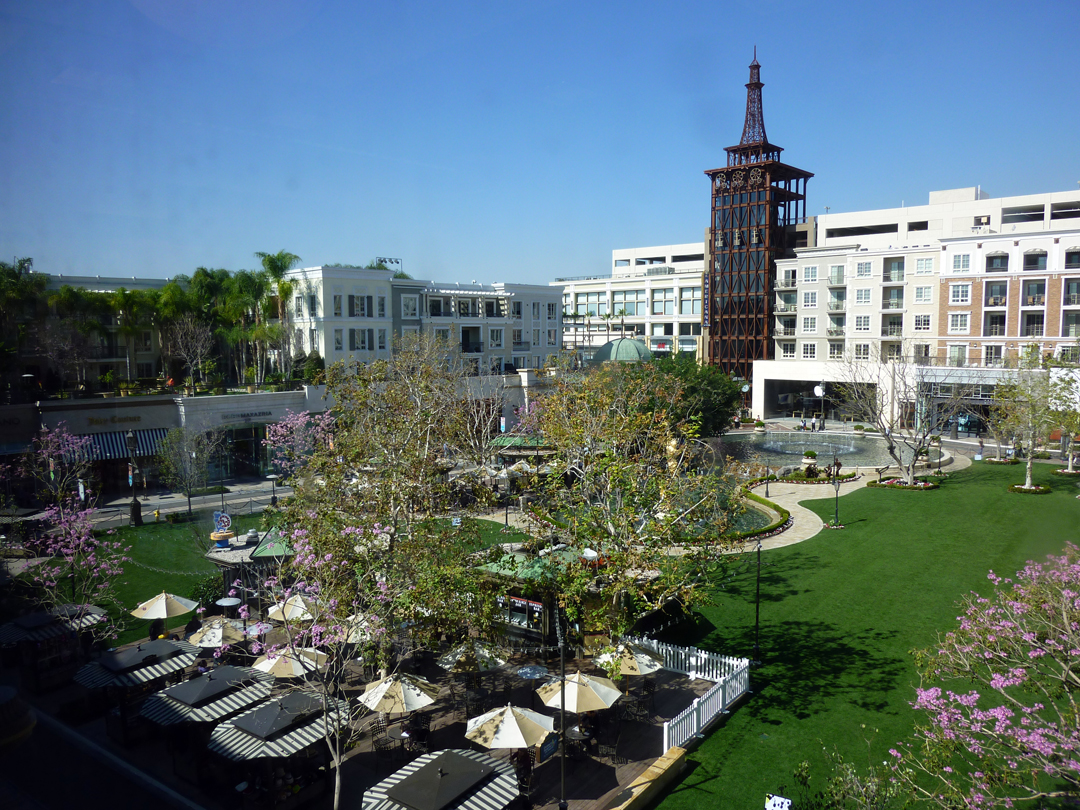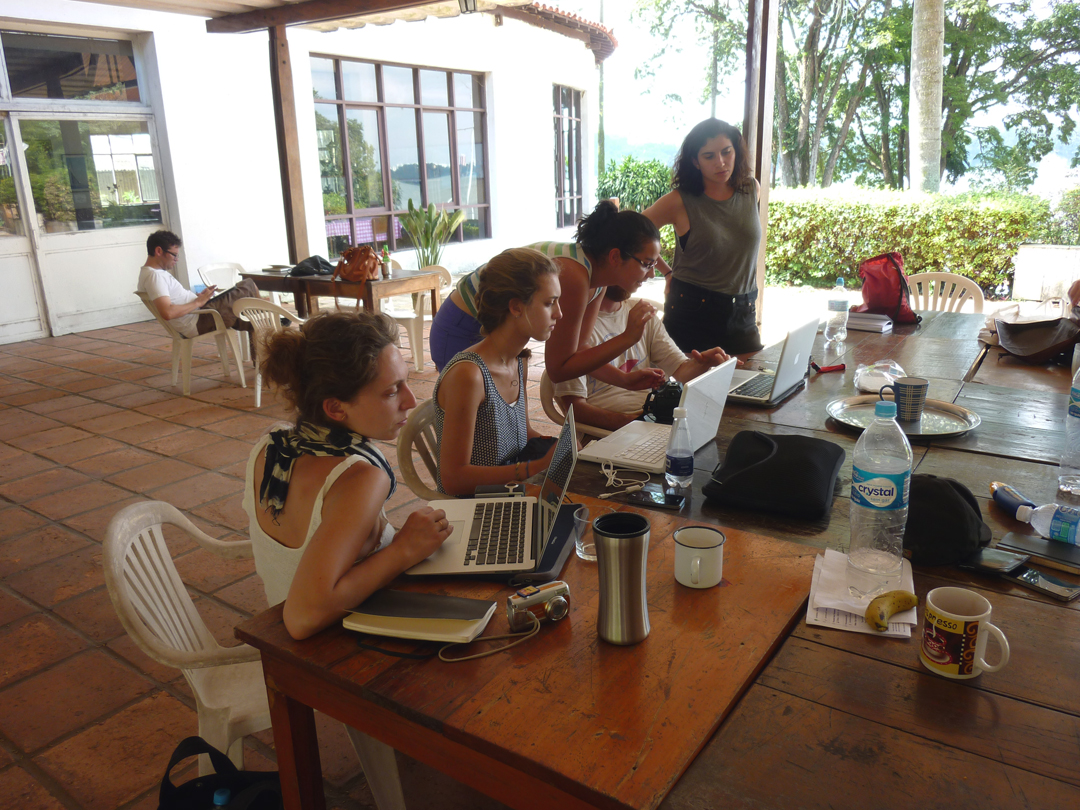The short video clip highlights some of the points made in a talk in Los Angeles in February 2014.
Source: YouTube.com
The short video clip highlights some of the points made in a talk in Los Angeles in February 2014.
Source: YouTube.com
Aseem Inam: Many of my fellow scholars, practitioners and activists increasing believe that the materiality of the city -- in terms of four-dimensional form, including time -- matters little. They believe that what matters most are the underlying economic structures or political processes that give rise to the form of the material city. While such structures and processes are absolutely critical to how cities are actually shaped, form also matters [although not in the overly-deterministic way that some conventional urban designers, architects, and landscape architects might think].
One of the most significant ways in which form matters is in the everyday experience of the city for all its citizens. People relate to the city in visceral ways through its materiality: the experience of its spaces, the colors and textures of its surfaces, the tactile qualities of its sidewalks and streets, and degrees of comfort or stimulation that a city's spatial layout provides. Another significant aspect is the symbolism that form embodies and is perceived by citizens. For example, while public institutions are supposed to be democratic and accessible in our cities, the actual public buildings -- such as city halls, legislatures and courts -- tend to be overly monumental and even intimidating.
What matters ultimately is the overall materiality of the city, more than the discrete forms of individual buildings and spaces. An excellent illustration of this are the recent interventions in Los Angeles, where a series of spectacular and beautiful projects appear to make the city more urban in their intensity and intimacy, as the images below indicate. However, each one of these -- the Los Angeles Cathedral, the Grand Park, the Americana at Brand, and Robert Graham's sculpture "Dancer's Door" framing a view of City Hall -- unfortunately do not add up to a more continuously urban experience. The materiality of the city is indeed much more than a series of isolated projects; what matters is the quality of its overall fabric, much of which is usually made up of the seemingly mundane and the banal [e.g. housing, offices, shops, streets, sidewalks] rather than the spectacular. It is this materiality we should pay the greatest attention to. AI

The Los Angeles Cathedral, as viewed from its courtyard. Source: Aseem Inam.

A view of one of the gardens of Grand Park in downtown Los Angeles. Source: Aseem Inam.

The outdoor Americana at Brand shopping mall, with housing above it. Source: Aseem Inam.

Robert Graham's sculpture "Dancer's Door" frames a view of City Hall from the Music Center Plaza in Los Angeles. Source: Aseem Inam.
Aseem Inam: Words can be powerful. Words can inspire [e.g. Martin Luther King's "I Have a Dream" speech], move [e.g. Pablo Neruda's poetry], and spark debate [e.g. Is "sustainability" a meaningful term?]. But can they actually transform cities? I believe so.
I make such an argument in my research, written work, and my projects. In my first book, Planning for the Unplanned: Recovering from Crises in Megacities, I craft a compelling argument through empirical field research about the ways in which urban crises are opportunities for redesigning institutions and redesigning cities in ways that are more responsive to the needs of their citizens. In Designing Urban Transformation, the argument is multifaceted. First, I analyze the term "urban design" and propose that it is overly narrow and even outdated due to its obsession with three-dimensional form and project-oriented architecture at the cost of engaging with the larger systems and longer processes that actually produce cities. Second, I propose calling the practice of city-design-and-building processes and their spatial products "urbanism," a term which can now be embraced as embodying nothing less than transformation. Third, I demonstrate how this can be done by drawing lessons from critical analyses of case studies from all over the world (e.g. Brazil, Egypt, France, Spain, U.S.). These are all words written in a book.
How can such words transform cities? One is through a reading and interpretation of the book itself. There are examples of books such as The Death and Life of Great American Cities, by Jane Jacobs, who was voted recently--albeit in a non-scientific poll--to be the most influential urban thinker. Of course, her book took a few decades to become truly influential. Another way is through public discourse and dialogue that is generated by the book, which is one reason I so enjoy talking about the book and engaging in conversations. The challenge in such talks is that people tend to prefer a relatively simple and fairly upbeat "take-away" message from the talk. I argue instead for deeper and more sophisticated thinking especially since cities are such large, complex and constantly changing phenomena. A third way is to test and further develop the ideas that words represent through on-the-ground strategies and projects. I do this through experimental studio projects, such as one in the Mexicantown area of Detroit at the University of Michigan, another near Chinatown in Boston at MIT, and most recently, in the Guarapiranga area of Sao Paulo. I'm happy to report that they have all been excellent experiences and we have learnt a lot about the true nature of urban transformation. AI

Photo of Vila Rubi favela / communidade [i.e. informal settlement] in Guarapiranga, Sao Paulo. Source: Aseem Inam.
Aseem Inam: How does one design emerging urban practices for the 21st century city? A group of scholar-practitioners from New York and São Paulo investigated this strategy under the thematic umbrella of "informal urbanisms." By "informal urbanisms," I mean the condition of ambiguity that exists in between conventionally demarcated notions of the city [formal/informal, legal/illegal, acceptable/unacceptable, public/private]. Our team worked intensively and interactively in the Guarapiranga area of Sao Pãulo by developing practices that emerge out of our interactions with each other, with the area, and of course, with local communities.
In this process, we created new connections on the edges of the Guarapiranga reservoir by designing a "pier to pier" strategy of new piers that serve as public spaces, locations for social service delivery, and leisure activities. Services such as health clinics, public libraries, job training, and tactics for community organizing help enhance the lives of those in the surrounding favelas (low-income communities) without intervening directly into those communities. Such services also also foster conditions for lower- and middle-income groups to meet and interact.
In addition, a "floating plaza" circulates throughout the large reservoir, serving as a place of gathering and meeting, as well as a flexible setting for a cooperative bank one day, a health clinic the next, a public library the next, an affordable housing workshop the next, and so forth. The unique design of this "floating plaza" makes it a community landmark that residents can identity with. Finally, a new public ferry system works in tandem to facilitate access to employment opportunities in the city. Such emerging urban practices create strategies that are flexible and adapt to the rapidly changing needs of the 21st century. AI

Workshop team working interactively and collaboratively on-site in Guarapiranga, São Paulo. Image: Aseem Inam.
Aseem Inam: On December 12, 2013, the Urban Colloquium at Parsons The New School for Design presented "Transforming Cities / Transforming Practice" in New York City. On the occasion of the official release of Designing Urban Transformation, there was a book signing and reception, presentation, and panel discussion around the following questions: How can we transform cities by transforming the practice of urbanism itself? What are the kinds of truly creative strategies needed to generate fundamental urban change? The panelists included Christine Gaspar, Executive Director of Center for Urban Pedagogy, Shin-pei Tsay, Research and Development Director of the Transit Center, Matthew Delsesto, Urban Activist and Scholar-Practitioner at Parsons , and Aseem Inam, Director of Graduate Program in Urban Practice at Parsons. The event was extremely well attended, with excellent questions and comments from the audience. The discussion demonstrated that there is a real hunger for truly transformative modes of practice that extend far beyond the sometimes facile tropes such as technology, innovation, sustainability, resilience, or community participation in design. There is a lot of truly hard--and rewarding--work to be done. AI

Poster design: Anze Zadel
The book is now available for purchase as a paperback and as an e-book. Designing Urban Transformation has received high praise from a range of urban practitioners and scholars. For reviews as well excerpts from the preface, please click here. To celebrate the release of the book, the publisher--Routledge--is offering a 20% discount and free shipping. Please click here for details about this limited time offer.

Cover design: Sally Beesley, Namkyu Chun and Aseem Inam.
Matt DelSesto: I attended the the 9th annual Connecting for Change conference this past weekend in New Bedford, Massachusetts. Sponsored by the Marion Institute, Connecting for Change is a three day solutions-based gathering that seeks to bring together a diverse audience to create deep and positive change in their communities. More than 2000 people gathered this year to hear 100 presenters in a series of 50 workshops and 12 keynote addresses from speakers including Bill Strickland, Tricia Rose, James Hansen, and many other activists, organizers, business owners, and change-makers. And this conference walks the talk. During the entire weekend only six bags of trash were generated (the rest of the waste from meals was composted and recycled). Marion Institute has made substantial efforts to responsibly contribute to the complexity of the local community based on ideas proposed in the conference--for example they partner with local schools and non-profit organizations year-round to carry out transformative sustainability projects and offer generous scholarships based on financial need. Once known as the "whaling capital" of the world, New Bedford currently faces problems similar to other post-industrial New England cities, including relatively high unemployment and crime. Connecting for Change demonstrates that there is a powerful role for sustainability in the midst of this changing city and that a conference can contribute lasting positive change to the surrounding city and region. MJD

Part of Purchase Street is closed for the Connecting for Change exhibition tent and farmers market--an asset for residents and program participants alike--in Downtown New Bedford, Massachusetts. Source: Matt DelSesto
Aseem Inam: My talk at Swarthmore College lead to excellent discussions before, during, and after the talk. At dinner before the talk, the subject of Detroit came up. I described how during my work in Detroit in the 1990s, I discovered that at the time two of the only neighborhoods that were either relatively stable or were actually growing were Mexicantown and Chaldean Town. In Mexicantown, for example, immigrants (including many from Central America) came in and fixed abandoned houses and started small businesses. The neighborhood grew with virtually no support from the city or state governments, corporations, or foundations. As urbanists, we have to seek and support such initiatives. In other words, what if we--urbanists--participated in community projects rather than the other way around? AI.

Mexicantown Bakery in Detroit. Source: Wikimedia Commons